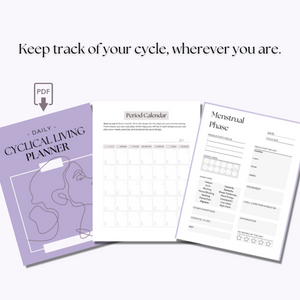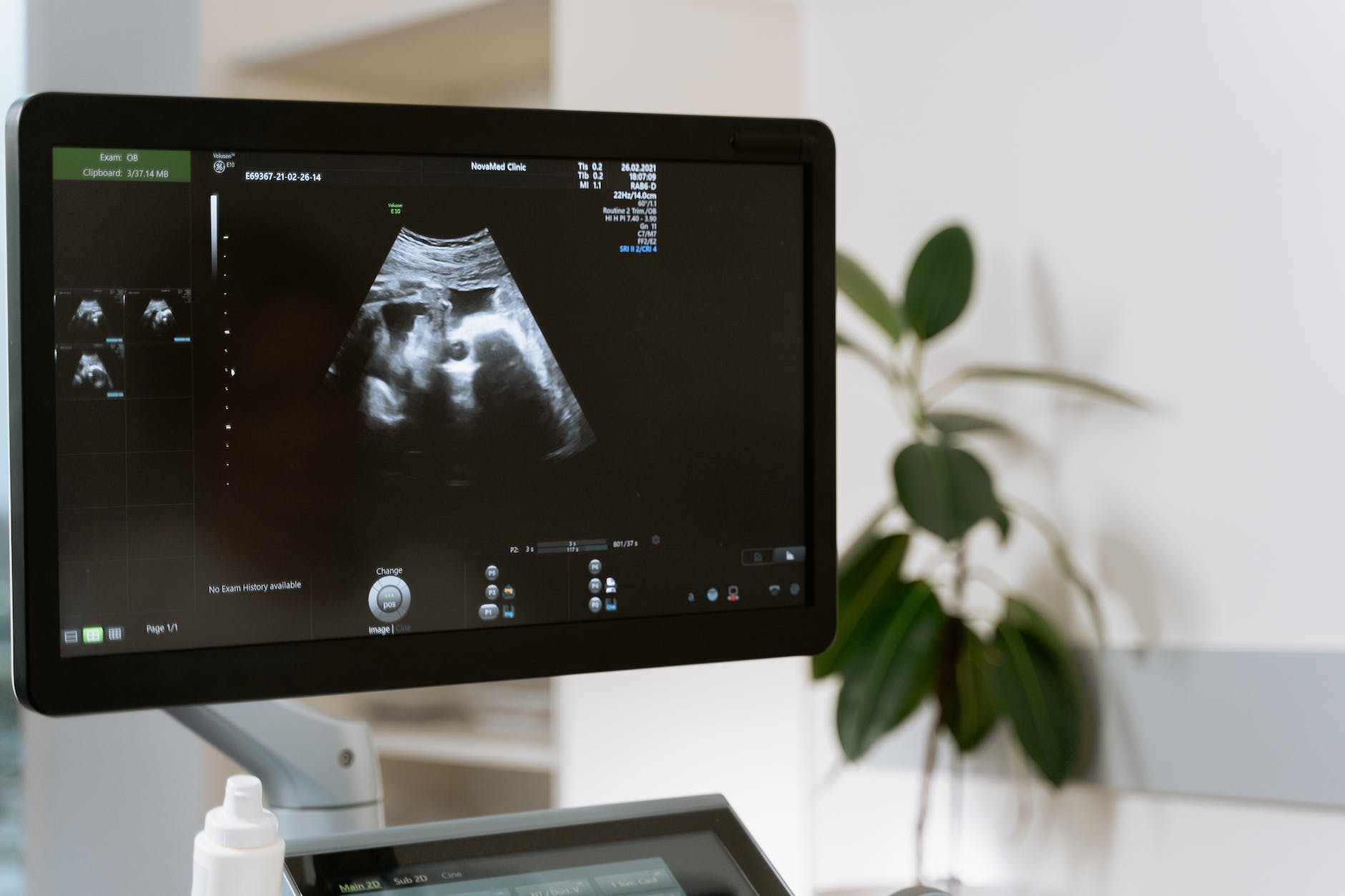Fibroid Removal Procedures: Know Your Options
After long periods of dealing with severe fibroid symptoms, you may be considering a fibroid removal procedure or fibroid surgery.
Most women are familiar with hysterectomy or myomectomy. But did you know that there are actually several options that may be possible for you? And there are even several ways that specific procedures can be performed.

Uterine fibroids are noncancerous growths of the uterus that can cause a variety of symptoms such as heavy menstrual bleeding, pelvic pain, and fertility issues. Many women affected by fibroids experience no symptoms, but some women experience moderate to severe symptoms.
Surgical intervention may be necessary when conservative treatments and lifestyle changes are ineffective. This is especially the case if fibroids are large and cause infertility or impact other organs.

Start Tracking Your Symptoms
Get my cyclical living planner to track your cycle, symptoms and plan your life.
In this blog post, we’ll explore the most common types of fibroid procedures, how they are performed, and what you can expect during the recovery period. But before we dive into that, let’s talk about what to do before a fibroid removal procedure.
Tips for preparing for fibroid removal or surgery.
- Do your research. Clearly, you’re doing that if you’re reading this post. But it’s important to do as much research as possible to have a successful dialog with your healthcare provider.
- Create a list of questions to ask your doctor. You can refer to this post to give you some inspiration for what to ask.
- Begin making healthy lifestyle changes. Not only will this help you have a smoother recovery, but it can also reduce your risk for the recurrence of fibroids post-surgery. (Yes, they can come back.) Book a discovery call with me if you need some help with this.
- Ask your doctor what types of procedures they have experience performing and which ones they’ve done the most. Unfortunately, some doctors will only recommend procedures they’re most comfortable doing. So, if you their experience isn’t aligned with the procedure you’re most interested in, it’s important to get a referral to another doctor or get another opinion.
- Take a friend to your appointment. Having another person there can be helpful for recalling important information and asking additional questions.
- Get to meal prepping. Prepare some healthy meals beforehand, use a meal delivery service or ask friends to do a meal train in preparation for your recovery time.
- Confirm all costs with your provider and insurance company. The last thing you’ll want to deal with is unexpected costs related to your procedure.

There are several types of fibroid procedures available, each with its unique approach to removal and recovery. It’s important to know your options and talk through them with your doctor before you commit to a procedure.
So grab a pen and paper, and take notes to ask your surgeon or doctor which procedure is right for you. Let’s start with the least invasive procedure and work our way up to the more invasive procedures.
Radiofrequency Ablation
I first stumbled upon this procedure when a company called Acessa Health reached out to me to collaborate with them a couple of years ago.
Radiofrequency ablation is done by placing a needle in the affected area. The needle applies energy to the fibroid to destroy the fibroid tissue and leaves the surrounding area unaffected. The destroyed tissue is reabsorbed.
While this procedure is considered a minimally invasive outpatient procedure, it’s important to note that this procedure can affect the lining of the uterus. So, if fertility is a concern for you, this might not be the best option.
Uterine Artery Embolization (UAE)
UAE is a non-surgical procedure that involves blocking the blood supply to the fibroids to cause them to shrink.
A small incision is made in the groin area. Then a catheter is threaded through the blood vessels to the arteries that supply blood to the fibroids.
Tiny particles are injected into these arteries to block blood flow to the fibroids. The fibroids gradually shrink, relieving symptoms over time.
Recovery from UAE is generally quicker than surgical procedures, with most patients returning to their normal activities within a few days to a week.
Something to note about this procedure is that there is a risk of failure. And due to the unreliability of ultrasound imaging, there’s also a chance that some fibroids might get missed in the process.
Myomectomy
Myomectomy is a surgical procedure designed to remove fibroids while preserving the uterus. There are three main approaches to myomectomy:
Hysteroscopic Myomectomy: This procedure is performed through the cervix and does not require any external incisions. Recovery is usually faster than both abdominal and laparoscopic myomectomy.
Laparoscopic Myomectomy: Also known as minimally invasive surgery, laparoscopic myomectomy uses small incisions and specialized instruments to remove the fibroids. Recovery is generally quicker, with less pain and scarring compared to the abdominal approach.
Abdominal Myomectomy: This involves making an incision in the lower abdomen for access to the uterus. Recovery from abdominal myomectomy typically takes several weeks.

Free Cycle Tracker
Subscribe now to get my free cycle tracker delivered straight to your inbox.
Hysterectomy
Hysterectomy is the complete removal of the uterus, and it can be performed through various methods:
Vaginal Hysterectomy: The uterus is removed through the vaginal canal. Recovery is typically quicker than abdominal hysterectomy.
Laparoscopic or Robotic-Assisted Hysterectomy: These minimally invasive approaches use small incisions and specialized instruments to remove the uterus. Recovery is usually faster and less painful than the abdominal approach.
Abdominal Hysterectomy: An incision is made in the lower abdomen to remove the uterus and fibroids. Recovery may take several weeks.
Recovery from hysterectomy varies depending on the type of procedure and individual factors. It may range from a few weeks to several months.

Post-op considerations for fibroid removal
Recovery from fibroid procedures depends on several factors, including the type of procedure, the size and number of fibroids, and the patient’s overall health. Here are some general recovery guidelines:
Pain Management: Pain and discomfort are common after fibroid procedures. Medications prescribed by your doctor can help manage pain.
Rest: Rest is crucial for a smooth recovery. Avoid strenuous activities, heavy lifting and any other strenuous activity for the recommended duration.
Follow-up: Please do not skip any regular follow-up appointments with your healthcare provider. These are essential to monitor your progress and discuss any complications that may arise.
Dietary Considerations: Eating a healthy diet, staying hydrated, and avoiding constipation can aid in a smoother recovery.
Emotional Support: Don’t underestimate the emotional aspect of recovery. Seek support from family, friends, or support groups if needed.
For some, a fibroid removal procedure might be the most efficient solution for relief from the symptoms caused by these noncancerous uterine growths. The choice of procedure and the recovery process depend on individual factors and the extent of the fibroids.
Consult with your healthcare provider to determine the most suitable approach for your situation and to receive personalized guidance on the recovery process. With the right treatment and care, you can look forward to improved quality of life and well-being.






